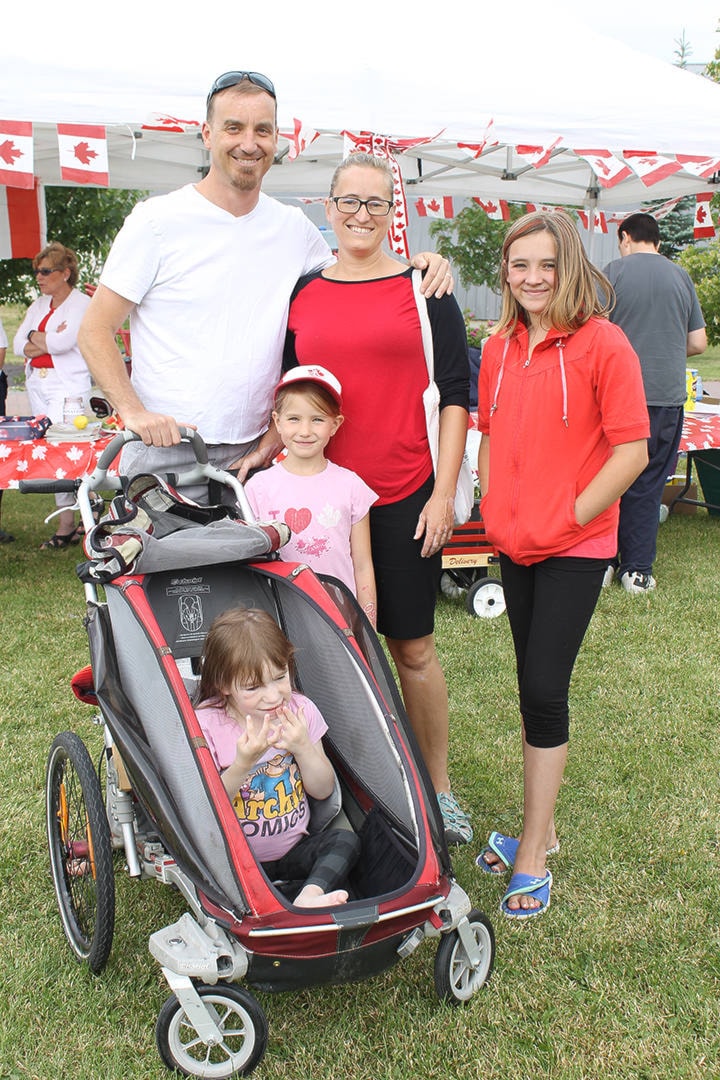While many couples might say that they don‚Äôt go on adventures because they have kids, that certainly didn‚Äôt stop —«÷ÞÃÏÃ√ Lake couple Steve and Nellie Davis.
The adventurous couple recently walked the famed ‘Camino de Santiago,’ which ends in Spain, completing 240 km on foot, 300 km by train and another 260 km on foot with their three kids - ages six, 10 and 12.
“The kids did amazingly well, better than many adults we met,” said Steve. “We tried to walk less than 20 km a day as often as we could, as more than that made the kids very tired; now they feel very proud to know they have accomplished such an amazing thing.”
The approximately nine weeks of adventure were particularly challenging for this family because one of their kids, Natalie, has been diagnosed with a genetic defect which affects her mobility.
“Natalie takes four anticonvulsant medications, six or more daily supplements, and is fed a prescribed ketogenic diet,” explained Steve. “All of this had to be prepared and packed along with us, which was the most challenging part of both planning and executing our trip.”
Natalie was carried in a stroller throughout the hike, which at times meant going over steep rocky sections of trail.
“We used the ski harness in some sections so that we could have one person pulling and one person pushing, which made it possible,” said Steve.
But overcoming challenges was exactly what made the trip so rewarding for this family.
“It is hard to quantify an experience that reaches you on physical, emotional and spiritual levels,” they said.
“A pilgrimage is not an easy undertaking emotionally, as well as physically; there is much sacrifice involved in packing up your bag and putting your feet in your shoes every morning, but there is much reward as well.”
“One of the best rewards was being able to spend uninterrupted time together as a family, and to experience shared experiences together.”
The couple said the best moments of their trip were crossing the second highest peak on the Camino and passing the Cruz de Ferro - an iron cross that pilgrims leave stones underneath as a symbol of something they have carried with them.
“The mountain views were incredible, and the abundant wildflowers were a huge treat for both sight and smell,” they said. “Some nearby peaks looked purple just from flower cover.”
“After the long day, our albergue [hostel] in El Acebo felt so luxurious after dormitory accommodation, with a pool and wonderful restaurant looking down the mountain into Ponferrada,” they added. “The day was a win in every way.”
While there are different routes to complete the Camino de Santiago, after some research the couple chose the ‘Camino Frances,’ which starts in France and crosses the Pyrenees Mountains into Spain.
“We chose this route for both the trail conditions, and for the shorter distances required to arrive at a place to eat or stay,” they said. “Other routes have more difficult terrain, or require 20 plus km between hostels, which made them too difficult for our crew.”
The family had been preparing to embark on this journey for the past two years. They made the decision after hearing a CBC re-run of an interview with Oliver Schroer, a musician and violin teacher from Smithers who hiked the Camino with his violin.
“He composed as he walked, and recorded in the beautiful old stone churches he passed as he walked through Spain,” said Nellie. “Steve heard the broadcast after Schroer had passed away from cancer, but his interview was inspiring and got Steve hooked on the idea of walking through Spain with our family.”
“Part of the motivation was that, as a well travelled pilgrimage, the Camino de Santiago is well set-up with accommodation and places to eat, making a long-distance hike possible for us,” she continued. “The more rugged terrain in Canada makes many long-distance hikes almost impossible with Natalie in a stroller or wheelchair, and we would also be required to carry heavy camping equipment, making such trips much more difficult for the children and us.”
“After two years of preparation, we were pretty well prepared for the hike; we practiced a bit at home before we left, and have a generally active lifestyle, which helped,” she added. “We could definitely see an increase in physical and emotional stamina in all of us as the trip progressed.”
The family said that one of the most rewarding parts of the trip was seeing how people admired their courage.
“I can’t count the times that we were stopped or congratulated, and many people said, ‘My kids wanted to come, but I didn’t think they could handle it.’”
“We are pleased that so many people realized that anything is possible, as long as you are patient and prepared, with any kids, even children with serious disabilities,” they said. “Natalie’s team at the B.C. Children’s Hospital hopes her experience will help other families in this situation realize how much is possible, even while under a strict treatment plan.”
“We would recommend that everyone take time out of their lives to experience each other and enjoy activities that feed your soul, whatever that may be,” they added. “If hiking is something you enjoy, then we absolutely encourage people to undertake their own Camino.”
The family is planning a slide presentation at the —«÷ÞÃÏÃ√ Lake Vineyard Church on July 17 at 6:30 p.m. They will be collecting donations for the Lakes District Food Bank at the door.



